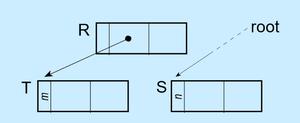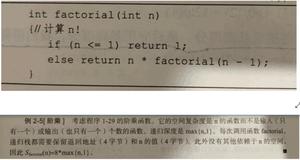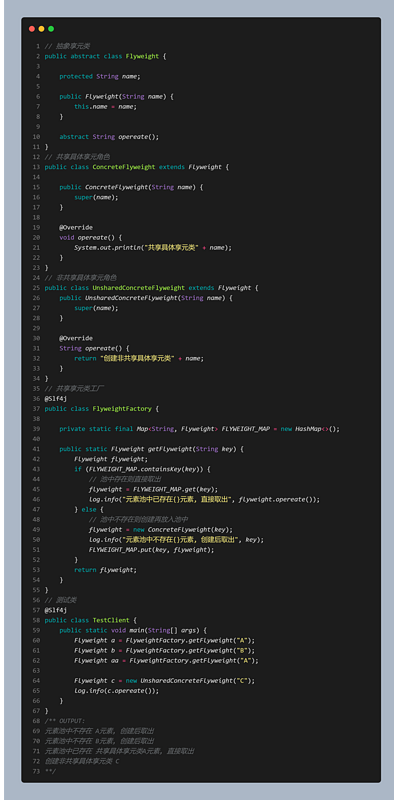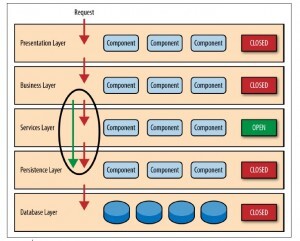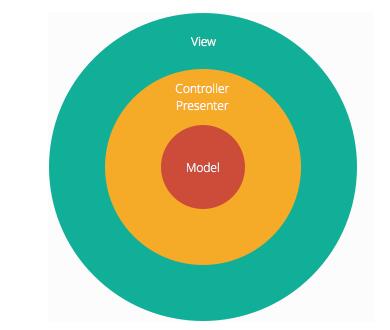架构师内功心法,连接两个空间维度的桥接模式详解

桥接模式(Bridge Pattern)也成为桥梁模式、接口模式或柄体(Handle And Body)模式,是将抽象部分与它的具体实现部分分离,使得它们都可以独立地变化。
一、桥接模式的应用场景
桥接模式主要目的是通过组合的方式建立两个类之间的联系,而不是继承。但又类似于多重继承方案,但是多重继承方案又违背了类的单一职责原则,其复用性比较差,桥接模式是比多重继承更好的替代方案。桥接模式的核心在于解耦抽象和实现。
1.1 桥接模式的角色
接下来我们看下桥接模式通用的UML图:
从UML图中可以看出桥接模式主要包含四种角色:
- 抽象(Abstraciton):该类持有一个对实现角色的引用,抽象角色中的方法需要实现角色来实现。抽象角色一般就是抽象类(构造函数规定子类要传入一个实现对象);
- 修正抽象(RefinedAbstraction):抽象的具体实现,对抽象类方法进行扩展和完善。
- 实现(Implementor):确定实现维度的基本操作,提供给抽象类使用。该类一般为抽象类或接口。
- 具体实现(ConcreteImplementor):实现类(Implementor)的具体实现。
下面来看具体实现的代码:
首先创建抽象 Abstraction 类:
public abstract class Abstraction { protected IImplementor iImplementor;
public Abstraction(IImplementor iImplementor) {
this.iImplementor = iImplementor;
}
void operation(){
this.iImplementor.operationImpl();
}
}
创建修正抽象 RefinedAbstraction 类:
public class RefinedAbstraction extends Abstraction { public RefinedAbstraction(IImplementor iImplementor) {
super(iImplementor);
}
@Override
void operation(){
super.operation();
System.out.println("refined operation");
}
}
创建角色实现 IImplementor 接口:
public interface IImplementor { void operationImpl();
}
创建具体实现ConcreteImplementorA、ConcreteImplementorB 类:
public class ConcreteImplementorA implements IImplementor { @Override
public void operationImpl() {
System.out.println("concreteImplementor A");
}
}
public class ConcreteImplementorB implements IImplementor { @Override
public void operationImpl() {
System.out.println("concreteImplementor B");
}
}
测试main方法:
public static void main(String[] args) { IImplementor iImplementorA = new ConcreteImplementorA();
IImplementor iImplementorB = new ConcreteImplementorB();
Abstraction absA = new RefinedAbstraction(iImplementorA);
Abstraction absB = new RefinedAbstraction(iImplementorB);
absA.operation();
absB.operation();
}
桥接模式有以下几个应用场景:
- 在抽象和具体实现之间需要增加更多灵活性的场景;
- 一个类存在两个(或多个)独立变化的维度,而这两个(或多个)维度都需要独立进行扩展;
- 不希望使用继承,或因为多层继承导致系统类的个数剧增。
1.2 桥接模式的业务实现案例
我们在平时办公的时候经常需要通过发送邮件消息、钉钉消息或者系统内消息和同事进行沟通。尤其是在使用一些流程审批的时候,我们需要记录这些过程以备查。可以根据消息的类型来进行划分,可以分为邮件消息,钉钉消息和系统内消息。但是,如果根据消息的紧急程度来划分的话,可以分为普通消息、紧急消息和特急消息。显然,整个消息系统可以划分为两个大维度。
如果使用继承的话情况就复杂了,而且不利于扩展。邮件信息可以是普通的,也可以是紧急的;钉钉消息可以是普通的,也可以是紧急的。下面使用桥接模式解决这类问题:
首先创建一个IMessage接口担任桥接的角色:
/** * 实现消息发送的统一接口
*/
public interface IMessage {
/**
* 发送消息
* @param message
* 内容
* @param user
* 接收人
*/
public void send(String message, String user);
}
创建邮件消息类实现IMessage接口:
/** * 邮件信息实现类
*/
public class EmailMessage implements IMessage {
@Override
public void send(String message, String user) {
System.out.println(String.format("使用邮件的方式发送消息 %s 给 %s", message, user));
}
}
创建钉钉消息类也实现IMessage接口:
/** * 钉钉信息实现类
*/
public class DingMessage implements IMessage {
@Override
public void send(String message, String user) {
System.out.println(String.format("使用钉钉的方式发送消息 %s 给 %s", message, user));
}
}
然后在创建抽象角色 AbstractMessage 类,
/** * 抽象消息类
*/
public abstract class AbstractMessage {
//实现对象
IMessage message;
//构造方法传入实现部分的对象
public AbstractMessage(IMessage message) {
this.message = message;
}
/**
* 发送消息,委派给实现对象的方法
* @param message
* @param user
*/
public void sendMessage(String message, String user) {
this.message.send(message, user);
}
}
创建具体的普通消息实现 NormalMessage 类:
/** * 普通消息类
*/
public class NormalMessage extends AbstractMessage {
//构造方法传入实现的对象
public NormalMessage(IMessage message) {
super(message);
}
/**
* 发送消息,直接调用父类的方法即可
* @param message
* @param user
*/
public void sendMessage(String message, String user) {
super.sendMessage(message, user);
}
}
创建具体的紧急消息实现 UrgencyMessage 类:
/** * 紧急消息类
*/
public class UngencyMessage extends AbstractMessage {
public UngencyMessage(IMessage message) {
super(message);
}
/**
* 发送消息,直接调用父类的方法即可
* @param message
* @param user
*/
public void sendMessage(String message, String user) {
super.sendMessage(message, user);
}
/**
* 扩展自己的功能,监控消息的状态
* @param messageId
* @return
*/
public Object watch(String messageId) {
return null;
}
}
测试main方法:
public static void main(String[] args) { IMessage message = new EmailMessage();
AbstractMessage abstractMessage = new NormalMessage(message);
abstractMessage.sendMessage("周末加班申请", "张三");
message = new DingMessage();
abstractMessage = new UngencyMessage(message);
abstractMessage.sendMessage("请假申请", "李四");
}
运行结果:
在上面的案例中,我们采用了桥接模式解耦了“消息类型”和“消息紧急程度”这两个独立变化的维度。如果需要扩展这两个维度的内容,按照上述代码的方式进行扩展就好了。
二、桥接模式的源码体现
JDBC中的Driver类
我们都非常熟悉JDBC的API,其中有个Driver类就是桥接类。在使用的时候通过Class.forName() 方法可以动态的加载各个数据库厂商实现的Driver类。具体代码我们以mysql客户端为例:
private Vector<Connection> pool;private String url = "jdbc:mysql://localhost:3306/testDB";
private String username = "root";
private String password = "123456";
private String driverClassName = "com.mysql.jdbc.Driver";
private int poolSize = 100;
public ConnectionPool() {
pool = new Vector<Connection>(poolSize);
try{
Class.forName(driverClassName);
for (int i = 0; i < poolSize; i++) {
Connection conn = DriverManager.getConnection(url,username,password);
pool.add(conn);
}
}catch (Exception e){
e.printStackTrace();
}
}
首先来看一下Driver接口的定义:
Driver在JDBC中并没有做任何实现,具体的功能实现由各厂商完成,我们以Mysql为例:
public class Driver extends NonRegisteringDriver implements java.sql.Driver { public Driver() throws SQLExeption {}
static {
try {
DriverManager.registerDriver(new Driver()) ;
} catch (SQLE xception var1) {
throw new RuntimeExcept ion("Can"t register driver!");
}
}
}
当我们执行Class.forName("com.mysql.jdbc.Driver")方法的时候,就会执行上面类的静态块中的代码。而静态块只是调用了DriverManager的registerDriver()方法,然后将Driver对象注册到DriverManager中。接下来看一下DriverManager中相关的源代码:
/** * Registers the given driver with the {@code DriverManager}.
* A newly-loaded driver class should call
* the method {@code registerDriver} to make itself
* known to the {@code DriverManager}. If the driver is currently
* registered, no action is taken.
*
* @param driver the new JDBC Driver that is to be registered with the
* {@code DriverManager}
* @exception SQLException if a database access error occurs
* @exception NullPointerException if {@code driver} is null
*/
public static synchronized void registerDriver(java.sql.Driver driver)
throws SQLException {
registerDriver(driver, null);
}
/**
* Registers the given driver with the {@code DriverManager}.
* A newly-loaded driver class should call
* the method {@code registerDriver} to make itself
* known to the {@code DriverManager}. If the driver is currently
* registered, no action is taken.
*
* @param driver the new JDBC Driver that is to be registered with the
* {@code DriverManager}
* @param da the {@code DriverAction} implementation to be used when
* {@code DriverManager#deregisterDriver} is called
* @exception SQLException if a database access error occurs
* @exception NullPointerException if {@code driver} is null
* @since 1.8
*/
public static synchronized void registerDriver(java.sql.Driver driver,
DriverAction da)
throws SQLException {
/* Register the driver if it has not already been added to our list */
if(driver != null) {
registeredDrivers.addIfAbsent(new DriverInfo(driver, da));
} else {
// This is for compatibility with the original DriverManager
throw new NullPointerException();
}
println("registerDriver: " + driver);
}
在注册之前,将传递过来的Driver对象封装成一个DriverInfo对象。接下来调用DriverManager中的getConnection() 方法获得连接对象,看下源代码:
/** * Attempts to establish a connection to the given database URL.
* The <code>DriverManager</code> attempts to select an appropriate driver from
* the set of registered JDBC drivers.
*<p>
* <B>Note:</B> If a property is specified as part of the {@code url} and
* is also specified in the {@code Properties} object, it is
* implementation-defined as to which value will take precedence.
* For maximum portability, an application should only specify a
* property once.
*
* @param url a database url of the form
* <code> jdbc:<em>subprotocol</em>:<em>subname</em></code>
* @param info a list of arbitrary string tag/value pairs as
* connection arguments; normally at least a "user" and
* "password" property should be included
* @return a Connection to the URL
* @exception SQLException if a database access error occurs or the url is
* {@code null}
* @throws SQLTimeoutException when the driver has determined that the
* timeout value specified by the {@code setLoginTimeout} method
* has been exceeded and has at least tried to cancel the
* current database connection attempt
*/
@CallerSensitive
public static Connection getConnection(String url,
java.util.Properties info) throws SQLException {
return (getConnection(url, info, Reflection.getCallerClass()));
}
/**
* Attempts to establish a connection to the given database URL.
* The <code>DriverManager</code> attempts to select an appropriate driver from
* the set of registered JDBC drivers.
*<p>
* <B>Note:</B> If the {@code user} or {@code password} property are
* also specified as part of the {@code url}, it is
* implementation-defined as to which value will take precedence.
* For maximum portability, an application should only specify a
* property once.
*
* @param url a database url of the form
* <code>jdbc:<em>subprotocol</em>:<em>subname</em></code>
* @param user the database user on whose behalf the connection is being
* made
* @param password the user"s password
* @return a connection to the URL
* @exception SQLException if a database access error occurs or the url is
* {@code null}
* @throws SQLTimeoutException when the driver has determined that the
* timeout value specified by the {@code setLoginTimeout} method
* has been exceeded and has at least tried to cancel the
* current database connection attempt
*/
@CallerSensitive
public static Connection getConnection(String url,
String user, String password) throws SQLException {
java.util.Properties info = new java.util.Properties();
if (user != null) {
info.put("user", user);
}
if (password != null) {
info.put("password", password);
}
return (getConnection(url, info, Reflection.getCallerClass()));
}
/**
* Attempts to establish a connection to the given database URL.
* The <code>DriverManager</code> attempts to select an appropriate driver from
* the set of registered JDBC drivers.
*
* @param url a database url of the form
* <code> jdbc:<em>subprotocol</em>:<em>subname</em></code>
* @return a connection to the URL
* @exception SQLException if a database access error occurs or the url is
* {@code null}
* @throws SQLTimeoutException when the driver has determined that the
* timeout value specified by the {@code setLoginTimeout} method
* has been exceeded and has at least tried to cancel the
* current database connection attempt
*/
@CallerSensitive
public static Connection getConnection(String url)
throws SQLException {
java.util.Properties info = new java.util.Properties();
return (getConnection(url, info, Reflection.getCallerClass()));
}
private static Connection getConnection(
String url, java.util.Properties info, Class<?> caller) throws SQLException {
/*
* When callerCl is null, we should check the application"s
* (which is invoking this class indirectly)
* classloader, so that the JDBC driver class outside rt.jar
* can be loaded from here.
*/
ClassLoader callerCL = caller != null ? caller.getClassLoader() : null;
synchronized(DriverManager.class) {
// synchronize loading of the correct classloader.
if (callerCL == null) {
callerCL = Thread.currentThread().getContextClassLoader();
}
}
if(url == null) {
throw new SQLException("The url cannot be null", "08001");
}
println("DriverManager.getConnection("" + url + "")");
// Walk through the loaded registeredDrivers attempting to make a connection.
// Remember the first exception that gets raised so we can reraise it.
SQLException reason = null;
for(DriverInfo aDriver : registeredDrivers) {
// If the caller does not have permission to load the driver then
// skip it.
if(isDriverAllowed(aDriver.driver, callerCL)) {
try {
println(" trying " + aDriver.driver.getClass().getName());
Connection con = aDriver.driver.connect(url, info);
if (con != null) {
// Success!
println("getConnection returning " + aDriver.driver.getClass().getName());
return (con);
}
} catch (SQLException ex) {
if (reason == null) {
reason = ex;
}
}
} else {
println(" skipping: " + aDriver.getClass().getName());
}
}
// if we got here nobody could connect.
if (reason != null) {
println("getConnection failed: " + reason);
throw reason;
}
println("getConnection: no suitable driver found for "+ url);
throw new SQLException("No suitable driver found for "+ url, "08001");
}
在getConnection()中又会调用各自厂商实现的Driver的Connect()方法获得连接对象。这样巧妙的避开了使用继承,为不同的数据库提供了相同的接口。
三、桥接模式的优缺点
桥接模式很好的遵循了里氏替换原则和依赖倒置原则,最终实现了开闭原则,对修改关闭,对扩展开发。优缺点总结如下:
优点:
- 分离抽象部分及其具体实现部分;
- 提高系统的扩展性;
- 符合开闭原则;
- 符合合成复原则。
缺点:
- 增加系统的设计和理解难度;
- 需要正确识别系统中两个独立变化的维度
以上是 架构师内功心法,连接两个空间维度的桥接模式详解 的全部内容, 来源链接: utcz.com/z/514310.html

